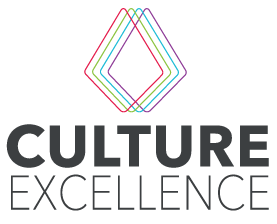Case Study: Bay State Milling
For 125 years, Bay State Milling’s purpose has been to provide food ingredients to promote the growth of nutritious, sustainable and accessible food choices. This relentless pursuit of better has spanned five generations of family ownership and continues to evolve as our food system—and the way we eat—changes.
Learnings from our experience with the Culture Excellence assessment
Conducting the Survey
Culture Excellence was selected to conduct the BSMC Culture Assessment
Extremely easy to set up
Not overly burdensome in the cost
Output has all the bells and whistles one could ask for!
Anonymous allowing employees to feel comfortable about making comments
Conducting the Survey & Employee Participation
Training & Conducting the Survey
Intent and importance of the survey
Provide survey in appropriate language
Hard copy or QR web-based option
Review the Survey results with Operations Employees - lead by Plant Manager / Sr. Mgr.
Strengths and opportunities for improvement
Feedback from employee’s on why did we do so well in some areas and how do we continue to do well
Feedback from employees on how we can improve in other areas and how can we be better
Management Team follow up and momentum
Keep the fire going by following through
Monthly tracking and trending
Analyzing the Data
Culture Assessment provides visibility
Participation
employees at site, # employees targeted to complete survey, # employees taking the survey
Comparisons
Company rating against industry
Company rating comparison to each facility
Facilities comparison to each other or BU’s against each other
Further filtering capability
All employees - overall site scores
Managers & senior Managers
Supervisors & Team Leads
Operations Employee
Administrative
Additional visibility Culture Assessment provides
Priority hotspots and risks
Positives, barriers, cultural strengths
Benchmarking against industry
Change over time - important to identify Culture Plan effectiveness over time
Employee comments
Warning - do not go down the rabbit hole
Pick the opportunities that are measurable and achievable
No more than 3-5 opportunities to track and trend
Managers/Senior Managers must own the data and the Culture Plan
Understand if there are certain circumstances at a facility that would drive less than desirable results
Negative skewing of results
Culture Assessment Bonus
Visibility of opportunities that are system wide vs site level - low hanging fruit to address company wide
Example: Operational employees understanding of Company Values across the board was much lower than Managers, Senior Managers, and Supervisors
Gives the Plant Manager / Senior Manager visibility to the breakdown in ratings from direct staff (Managers, Supervisors) to Operational Employees
Provides foundation to build upon
Provides Executive Leadership and Corporate Quality Assurance understanding to the needs of the Plant Management Teams
Next Steps
We plan to repeat in 2024 and see the impact of our initiatives and any other changes over time.
A company with a healthy Culture is one that doesn’t just have the programs in place; it is one where active commitment at all levels of the organization exists.
Reference: Campden BRI (2023), Culture Excellence 9th Annual Seminar





